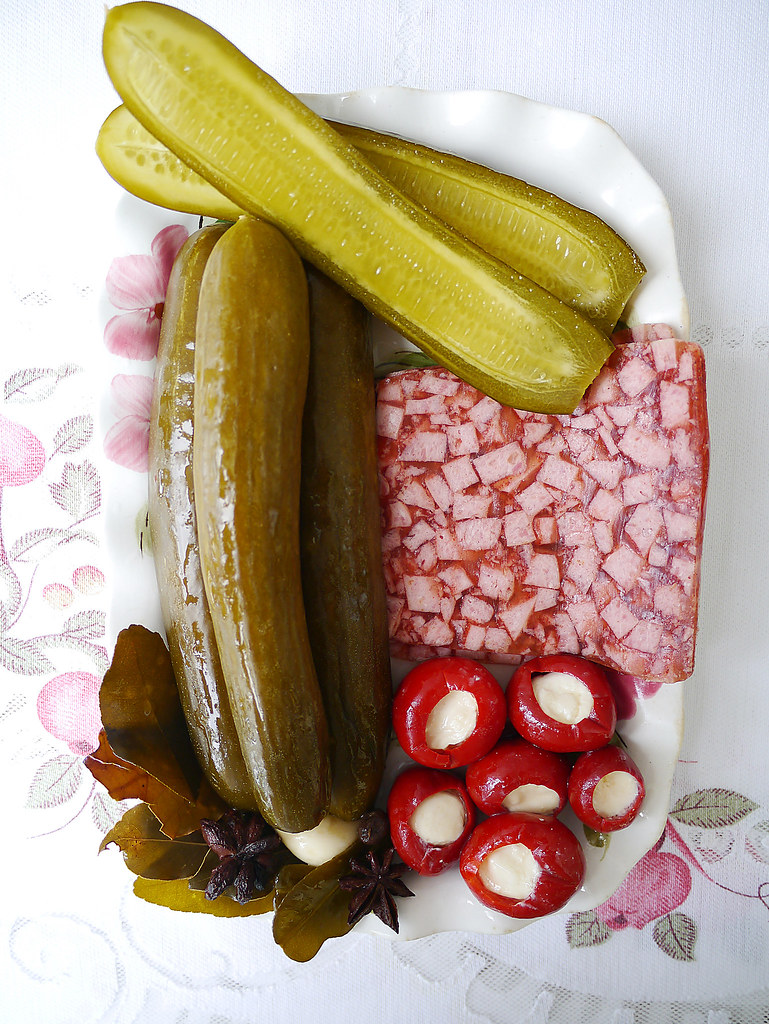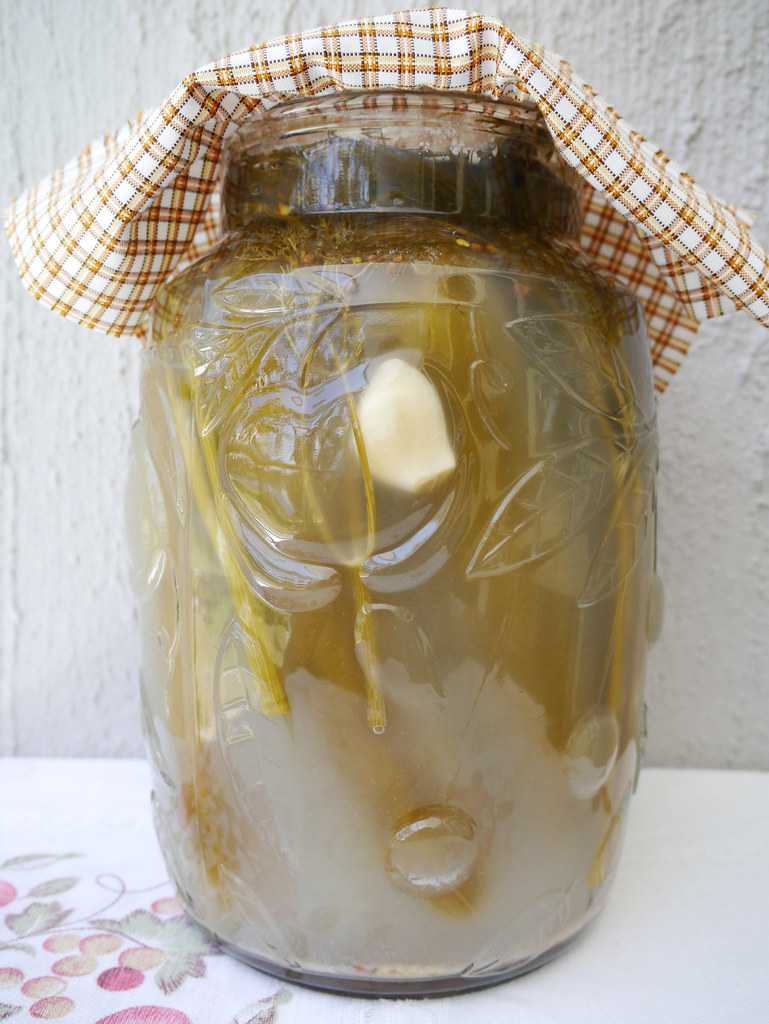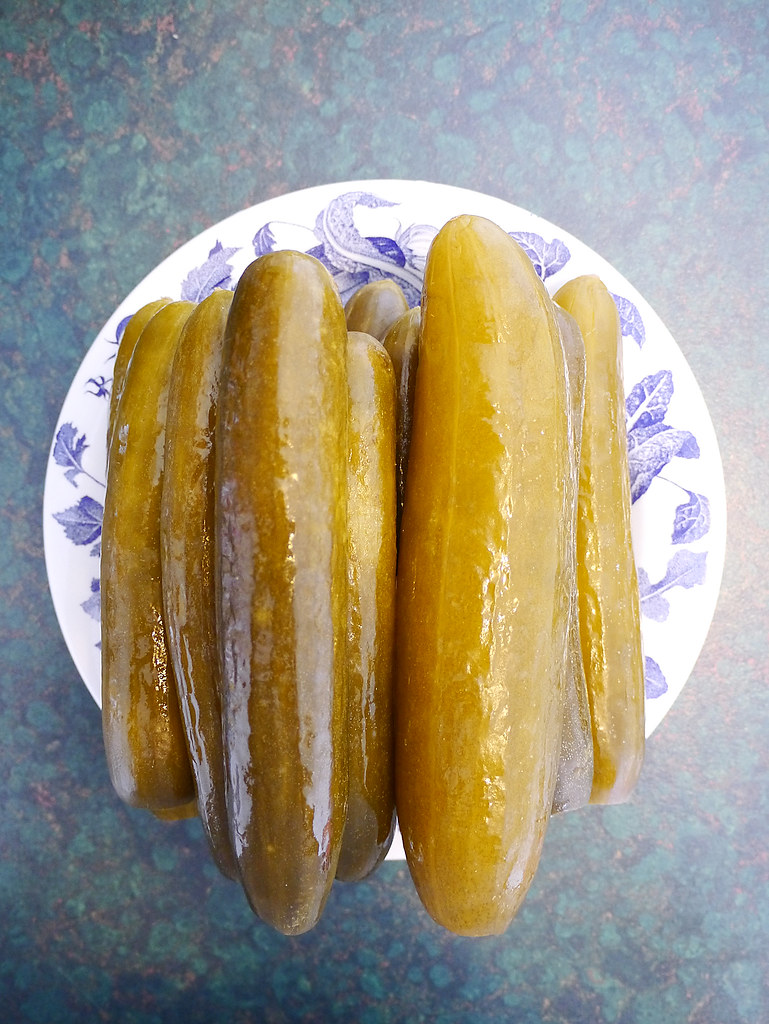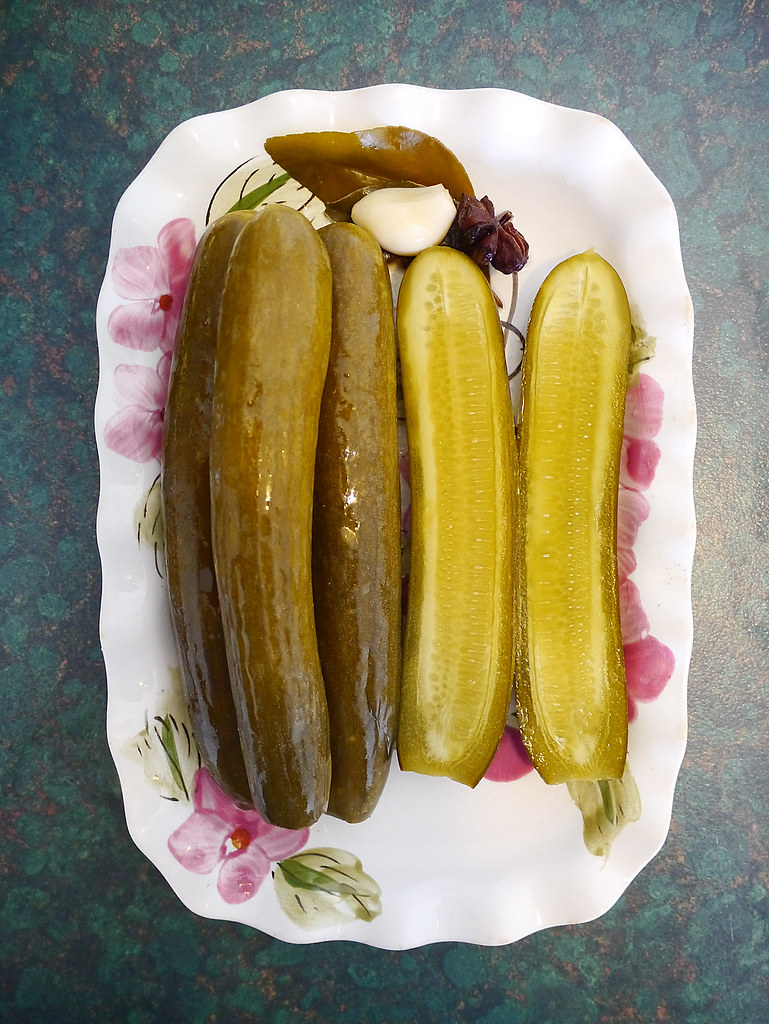
Note: Please use pickling cucumbers and non-chlorinated water to ensure your pickles turn out right. Please read Meredith Schultz’s comment at the end of this post for more info.
~
[dropcap]It’s[/dropcap] quite a pretty picture of colours and shapes, isn’t it? Well, I think so at least. I was pleasantly surprised when my partner returned from the shop with a selection of tasty items for the photo shoot. In particular, I was drawn to the fabulous mosaic pink brawn and the alien red/white stuffed baby capsicum balls. They’re both delicious, and I think they complement the green giant dill pickles very well (colour and flavour wise). I especially love the soft yet lucid chartreuse colour of the inside of the cut pickle – delicately specked with tiny white seeds. Red and green really do mix well together, don’t they? Thank you Jesus.
Despite the handsomeness of the dill pickles, I would be telling a lie if I said they were a total success. You see, even though the ones in the photos are firm enough to pass my judgement, about half of them were just a little too soft/meh for my liking. Alas – this is the perils of fermenting your pickles for too long, and adapting recipes. Don’t underestimate how fast fermentation takes, especially if the weather is warm.
I think there’s 3 reasons why my dill pickles did not turn out so crispy/crunchy. First (as mentioned above) and the principal reason – they were left to ferment in the jars for too long. Second – I had cut off the cucumber tips and stems before pickling them. This resulted in the brine entering the cucumber faster than normal, and is reflected by the softer flesh near the cut tip. Third (and an assumption) – the type of cucumber used were not suitable for pickling. Perhaps, Lebanese cucumber skin is too thin and the flesh is to soft? Also, some of the cukes that I used were already on the soft side when I bought them.
Despite all this, the flavour of the dill pickles was very nice/delicious indeed. They tasted salty, sour, tangy, juicy and spicy/aromatic. My partner even went so far as to describe them as being “the best out of everything on the plate”! But he often says that about everything that I make, except if it’s meat. I said to him, “I’m not completely happy with them because some of them are too soft”. He replied, “no, they’re all all right”. Then he stated, “you should have listened to me”. My guinea pig aside – from my point of view, which tends to be more critical about everything, the dill pickles are very tasty and full of aromatic briny flavours.
Giant dill pickles are not for the faint-hearted. While there’s a sense of fun and novelty to eating them, they are quite intimidating and a challenge to eat whole (especially considering the fact that they’re mammoth salty/sour flavour bombs). So, only some were served whole, but most were served sliced up – quartered and halved lengthways into long slender batons and some into more manageable thin disc slices.
For the record, there was a white “bloom” on the surface of the pickles/brine when I lifted the cloth lid off. It looked gross so I just scooped it out with a spoon and chucked it away. To store the pickles in the fridge, I simply transferred them into a resealable plastic container, along with the brine. There’s now enough pickles in the fridge to last us for months. Some of them had tiny white spots on the skin which I believe is normal. I’ve seen these spots on my pickled onions and on deli-bought olives before. I’m not sure what they are exactly, so if you know, please feel free to let me know too. I’ve eaten many pickled food with them on it, and I’m still here typing…just…joking.
Note: These giant dill pickles turned out well and taste very good, and I’m glad I gave them a go. Many lessons were learnt from the process, as outlined above. I’m quite confident in this recipe and want to make it work, so I’m going to give it another try but with a few adjustments. I will try and use a different type of cucumber if I can find them. I will ferment them for half the time, maybe even faster to ensure maximum crispiness and crunchiness. I will not cut off the stems/tips on the cucumbers. Also, I’ve read that “alum” helps make them crunchy – I have no idea what it is but I’ll see if I can find it and think about using it.






Hi! I’m glad to read this update and wanted to share a little info. In your first post with the recipe you specifically said that you used tap water, and needing to use special water was a first world problem. You were so right! Everyone in the first world needs to use special water because chlorine will kill the bacteria that do the work pickling. It is the same with all fermented foods. A tiny bit of chlorine might not be enough to kill your batch, but you cannot control the amount in your tap and it does not evaporate away like some websites will tell you. I ran a kombucha club and everyone who used tap water had their batch and scoby fail, everyone else had great success. When fermenting, chlorinated water will often cause your product to spoil.
Also, your pickles were not crisp because they were the wrong vegetable, they had too high of a water content to begin with. That’s why there are special varieties made for pickling, that’s really the only difference, the density of the fruit, and that’s why you can’t substitute with salad cucumbers.
Would you be willing to update your initial recipe? I’d hate for beginners to have a bad fermenting experience on their first go and call it quits.
Hi Meredith, Thanks very much for your informative comment. I appreciate it. I’ve added a note in this post and the recipe post about your advice. :)